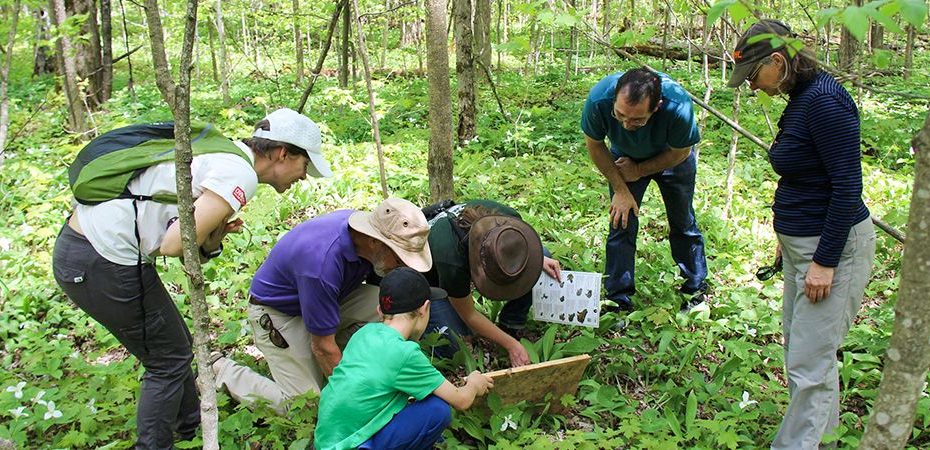The world of conservation is vast and intricate. While its importance is widely recognized, the challenge lies in fostering an understanding and appreciation of nature from a young age. One powerful approach to achieving this is by integrating real-world conservation efforts, such as the Ontario Reptile and Amphibian Atlas (ORAA), into educational curricula. By doing so, we will not only educate our future leaders about biodiversity but also instill a sense of responsibility toward the natural world.
Understanding the Atlas
Before diving into how educators can incorporate the ORAA into their teaching methods, it’s essential to understand its significance. The ORAA is not just a data collection initiative; it’s a testament to community involvement and collaboration. It offers a comprehensive look into the distribution and ecology of reptiles and amphibians in Ontario, detailing crucial insights into their habitats, behaviours and conservation status.
Monitoring salamander boards, Kinghurst Forest Nature Reserve © Lynn Miller
Lesson Plans and Activities for Elementary Schools
Introduction to Reptiles and Amphibians: Begin with an introductory lesson on the importance of reptiles and amphibians in ecosystems. Use the ORAA data to showcase the variety of species found in Ontario and discuss their unique roles.
Mapping Activity: Utilize the ORAA’s story map to invite students to explore species distribution. Students can then explore sightings on iNaturalist for a finer scale, or use this interactive map to map what species are known in their area.
Field Observation and Reporting: Encourage students to participate in field trips or outdoor activities where they can observe reptiles and amphibians. Using iNaturalist, students can document their findings, showcasing their observations on the ‘Herps of Ontario’ project and contributing to the broader conservation database.
Research Projects: Assign students research projects where they delve deeper into a specific species found in Ontario. They can use the ORAA as a primary resource, gathering information on the species’ habitat, behaviour, conservation status and more.
Classroom Presentations: Allow students to present their findings, utilizing the ORAA data to support their research. This encourages peer-to-peer learning and fosters a deeper understanding of the subject matter.
James presenting non-native red-eared slider to students © Kavita Dogra
Resources for Educators
ORAA Educational Guides: Ontario Nature developed a variety of reptile and amphibian educational resources, ranging from online field guides and species identification quizzes to instructional blogs. All these resources enhance the ORAA learning experience.
Ongoing Projects: Ontario Nature strongly encourages all readers to continue submitting reptile and amphibian observations to other community science programs including; iNaturalist, Herps of Ontario Project, Natural Heritage Information Centre’s Rare Species of Ontario Project, Toronto Zoo’s Adopt-a-Pond, Birds Canada’s Marsh Monitoring Program or Scales Nature Park’s Saving Turtles at Risk Today.
Empowering Students through Real-world Learning
By providing students with a tangible tool to engage with real-world conservation efforts, we empower them to become active participants in biodiversity conservation. As they document their observations and see their findings become part of a larger project, they develop a profound connection to the natural world.
Incorporating the Ontario Reptile and Amphibian Atlas into educational curricula offers a unique opportunity to blend environmental education with real-world conservation efforts. Together, let’s continue to weave the ORAA into our classrooms, empowering students to make a meaningful difference in the world around them.
By the Ontario Nature team
Resources
The post Educational Resources for Teachers and Students: Integrating the Ontario Reptile and Amphibian Atlas into the Classroom appeared first on Ontario Nature.
